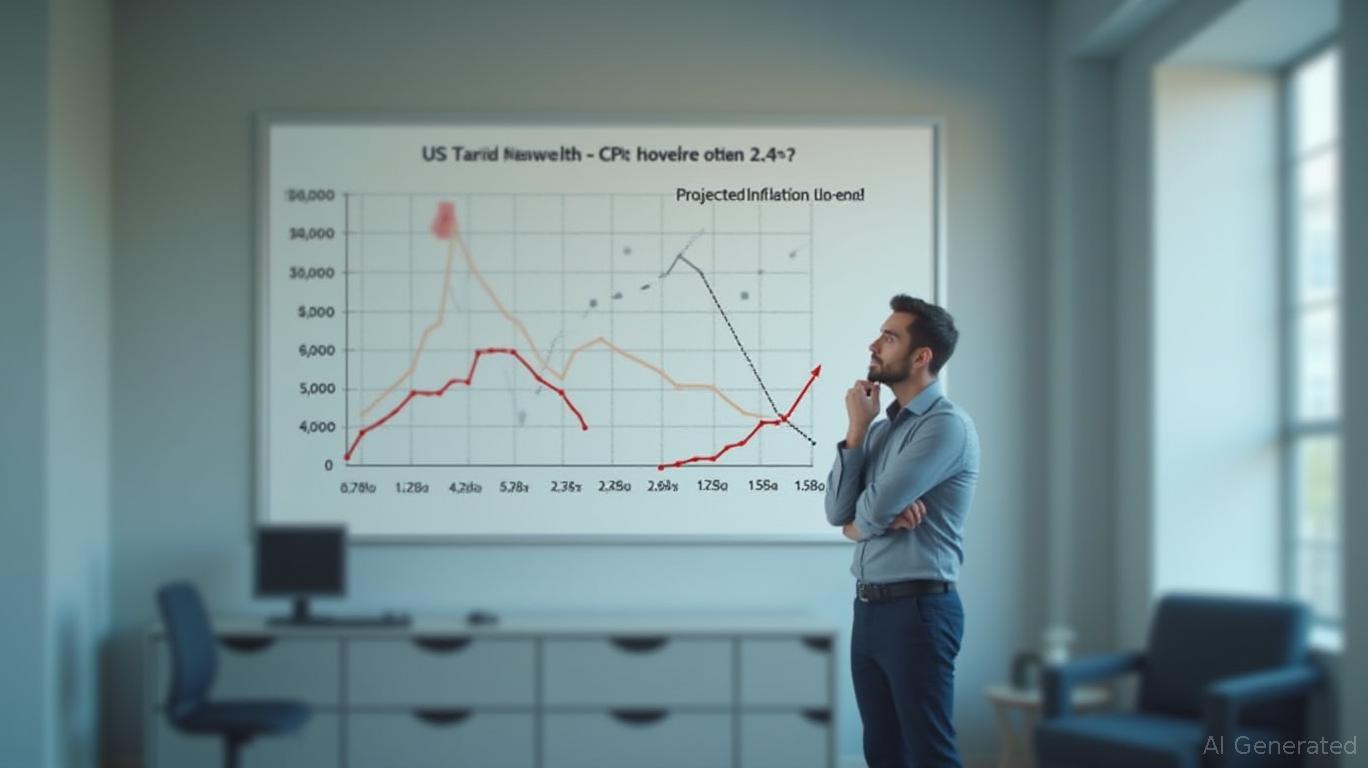May CPI and Tariff Dynamics: Navigating Rate-Sensitive Sectors Amid Inflation Lag
The May 2025 Consumer Price Index (CPI) report revealed a slight uptick in annual inflation to 2.4%, driven by base effects and muted underlying pressures. Meanwhile, tariff policies have reached historic heights, with average rates at 15.3%—the highest since 1938—yet their full inflationary impact remains obscured by lags and mitigating factors. This disconnect between trade policy and price trends presents a critical juncture for investors, particularly in rate-sensitive sectors like real estate, utilities, and consumer staples, which stand to benefit from Federal Reserve caution while navigating tariff-driven risks.

The Inflation Lag: Why Tariffs Haven't Sparked a Spike—Yet
The May CPI report shows subdued monthly inflation at 0.1%, with energy prices falling 1.0% and core inflation at 2.8%. However, tariff impacts are just beginning to materialize. The Yale Budget Lab estimates that tariffs could add $2,200 annually to households by 2025, but pass-through to consumer prices has been delayed. Key factors include:
- Inventory buffers: Companies stockpiled goods before tariffs took effect, delaying cost hikes.
- Competitive pricing: Retailers absorbed some costs to avoid losing market share.
- Sector-specific delays: While motor vehicle prices have surged 12.7% short-term, broader goods inflation lags as businesses adjust supply chains.
This lag creates a window for investors to position ahead of the anticipated inflation surge.
Fed Policy: Balancing Patience and Tariff Risks
The Federal Reserve faces a dilemma: inflation is near but not below its 2% target, while tariff-driven costs loom. Current CPI data may allow the Fed to hold rates steady, but risks of a late-year inflation spike—potentially pushing the rate above 3%—could force a response.
Investors should expect the Fed to remain data-dependent. A delayed rate cut could buoy rate-sensitive sectors, while a premature tightening might disrupt their recovery.
Strategic Opportunities in Rate-Sensitive Sectors
1. Real Estate & REITs
- Case for optimism: Low mortgage rates (currently 6.3%) and stabilized rent growth (3.9% annually) support housing demand.
- Risks: If tariffs drive broader inflation, the Fed might tighten, raising borrowing costs.
- Play: Overweight REITs with exposure to industrial or healthcare properties, which are less tied to consumer spending.
2. Utilities
- Stable cash flows: Regulated utilities offer dividends (averaging 3.2%) and insulation from tariff impacts.
- Interest-rate sensitivity: Utilities thrive in low-rate environments but may underperform if inflation forces hikes.
- Play: Focus on companies with renewable energy portfolios, which benefit from decarbonization trends.
3. Consumer Staples
- Defensive appeal: Brands like Procter & Gamble (PG) or (KO) offer steady demand even as tariffs raise prices on discretionary goods.
- Tariff exposure: Staples face minimal tariff pressure compared to discretionary sectors.
- Play: Look for staples with pricing power to offset input costs.
Hedging Against Tariff-Driven Inflation
Investors should pair rate-sensitive plays with inflation hedges like gold or energy stocks, which benefit from rising commodity prices tied to supply chain disruptions.
Risks to the Thesis
- Tariff escalation: Further hikes or trade wars could accelerate inflation, forcing the Fed to tighten.
- Global slowdown: Canada's 1.9% GDP contraction and China's 0.3% dip may reduce demand for U.S. exports, pressuring corporate earnings.
Conclusion: Position for the Fed's Tightrope Walk
The May CPI report buys time for rate-sensitive sectors, but tariffs remain a time bomb. Investors should:
1. Overweight REITs and utilities while the Fed holds rates.
2. Underweight discretionary sectors (e.g., automotive, apparel) exposed to tariff volatility.
3. Monitor core inflation metrics: A surge in shelter or medical costs could force the Fed's hand.
The disconnect between tariffs and inflation is temporary. Investors who act now can capitalize on the Fed's patience while hedging against the eventual pass-through of trade policy costs.
Sign up for free to continue reading
By continuing, I agree to the
Market Data Terms of Service and Privacy Statement

Comments
No comments yet